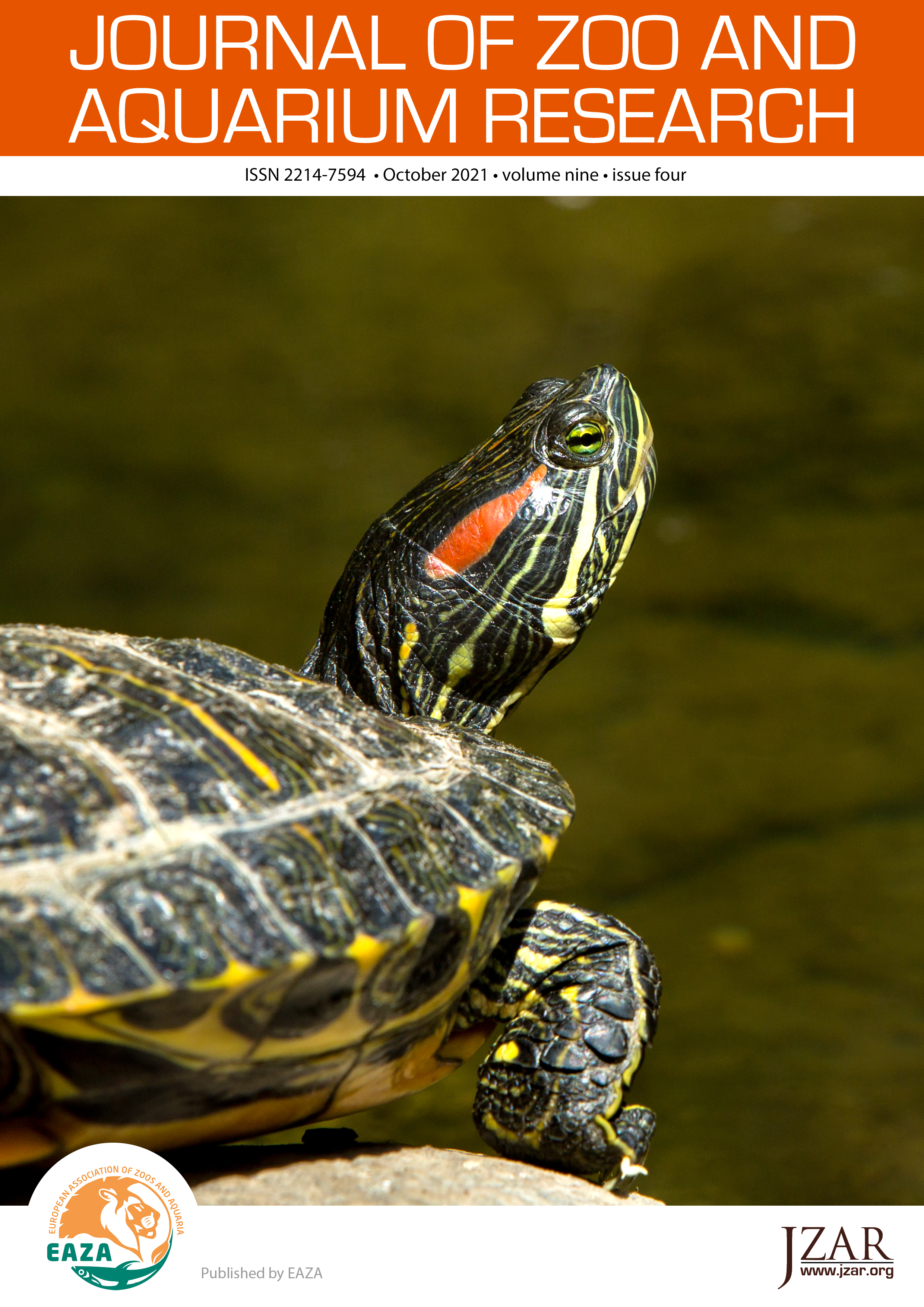The use of etonogestrel (Nexplanon®) and aglepristone (Alizin®) for population management of a colony of Rodrigues fruit bats (Pteropus rodricensis)
DOI:
https://doi.org/10.19227/jzar.v9i4.627Keywords:
aglepristone, contraception, etonogestrel, megachiroptera, population management , pteropid batsAbstract
Rodrigues fruit bats Pteropus rodricensis breed well in captivity and require active population management. Halved etonogestrel implants (34 mg dose) were implanted in 138 female bats either subcutaneously in the brachium, or dorsum, and proved 100% efficacious in both locations. Duration of action was up to 36 months. Implant losses varied by location with 34.8% loss over four years from the brachial site, but only 1.3% loss over two years at the dorsal site. Of bats which lost their implants, 34.5% were found to be pregnant at replacement, indicating reversal is possible. Possible side effects were significant weight gain one year after contraception (mean gain 21.4%) and two possible sequelae to progesterone-based contraception were noted at post-mortem examination of implanted bats that died during the programme; ovarian cysts and mild cystic endometrial hyperplasia. Further data are needed to establish if there is a link to the use of etonogestrel as insufficient pre-contraception data were available. Aglepristone (4.5 mg dose, subcutaneously, twice 24 hours apart) was 75% effective at terminating early pregnancies (<10 mm diameter). Aglepristone failure (confirmed pregnancies that did not terminate with aglepristone) increased as female age increased (odds ratio (OR) 1.7; P=0.02) and there was a tendency for aglepristone failure to decrease with increased pregnancy size (mm), but this was not significant (OR=1.7; P=0.07). No side effects attributable to aglepristone were noted. Breeding was successfully controlled in a population of 239 bats to reduce the colony size over time. At present growth and mortality rates, with 85–90% of females contracepted and a birth rate per sexually mature female of ~0.13/year, compared to an average of 1.08/year prior to the programme, the colony can be managed down to <175 bats over the next 5–6 years. Etonogestrel implants and aglepristone can be successfully used as part of a population management strategy in Rodrigues fruit bats.
Downloads
Additional Files
Published
How to Cite
Issue
Section
License
JZAR fulfils the DOAJ definition of open access and provides free and open access to the full text of all content without delay under a Creative Commons licence. The copyright holder of JZAR publications grants usage rights to third parties, allowing for immediate free access to the work and permitting any user to read, download, copy, distribute, print, search, or link to the full texts of articles.







